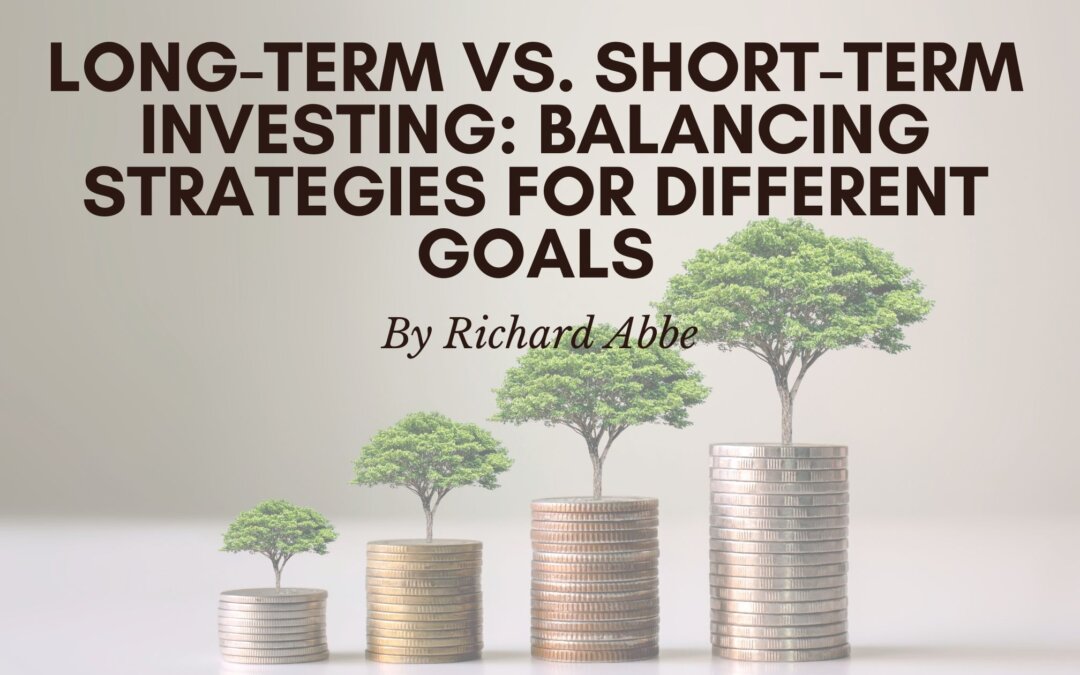Investing is often seen as a way to grow wealth and achieve financial goals, but your approach can vary greatly depending on your objectives. Long-term and short-term investing are two distinct strategies, each with advantages and disadvantages. Understanding these approaches and finding the right balance is crucial for achieving your financial aspirations.
The Long-Term Approach
Long-term investing is often associated with a patient and steady approach to wealth accumulation. It involves holding investments for an extended period, usually several years or even decades. Here are some critical aspects of long-term investing:
- Compound Interest: The power of compound interest is a significant advantage of long-term investing. You can watch your investments grow exponentially over time by reinvesting your earnings. The longer your money remains invested, the more it benefits from compounding.
- Risk Mitigation: Long-term investors are better equipped to weather market volatility. They can ride out the ups and downs of the market because their focus is on the overall trend, which tends to be upward over extended periods.
- Diversification: Long-term investors often have a more diversified portfolio, spreading their investments across different asset classes like stocks, bonds, and real estate. This diversification can help reduce risk.
- Tax Benefits: In some countries, long-term investments enjoy preferential tax treatment. Holding an asset for more than a year may result in lower capital gains taxes, further enhancing your returns.
- Retirement Planning: Long-term investing is commonly used for retirement planning. Building a substantial nest egg over several decades can provide financial security in your later years.
However, long-term investing has its challenges. It requires discipline, patience, and the ability to withstand short-term market fluctuations without making impulsive decisions.
The Short-Term Approach
Short-term investing, on the other hand, is all about capitalizing on quick opportunities in the market. It involves buying and selling assets over a relatively short period, often weeks or months. Here are some aspects of short-term investing:
- Quick Gains: Short-term investors aim to make quick profits. They seek to take advantage of market movements, trends, or news events that can cause rapid price changes.
- Flexibility: Short-term investors can adjust their strategies in response to changing market conditions. They can quickly reallocate their assets based on new information.
- Liquidity: Short-term investments are typically more liquid, meaning you can convert them into cash more readily. This can be useful for meeting short-term financial needs.
- Risk: Short-term investing can be riskier than the long-term approach. Market volatility and short-term fluctuations can result in significant losses if not managed carefully.
- Tax Considerations: In some countries, short-term capital gains are subject to higher tax rates than long-term gains, which can affect profits.
Balancing Strategies for Different Goals
The key to successful investing lies in striking the right balance between long-term and short-term strategies. Your financial goals and risk tolerance should guide this balance:
- Emergency Fund: Start by building an emergency fund with short-term investments. This fund should cover three to six months’ living expenses and provide quick access to cash when needed.
- Short-Term Goals: If you have short-term financial goals, such as buying a car or taking a vacation in the next couple of years, allocate a portion of your portfolio to short-term investments. This can help ensure you have the necessary funds when the time comes.
- Long-Term Goals: For long-term goals like retirement or buying a home in 10 or 20 years, focus on a diversified portfolio of long-term investments. This will harness the power of compounding and reduce the impact of market fluctuations.
- Risk Tolerance: Assess your risk tolerance honestly. If you’re uncomfortable with your investments fluctuating in value, lean more towards long-term strategies. If you can handle volatility and enjoy researching and trading, a short-term strategy may be suitable for a portion of your portfolio.
- Regular Review: Regularly review your portfolio and rebalance it as needed. As your financial goals and circumstances change, adjust your investment strategy accordingly.
Conclusion
There is no one-size-fits-all approach to investing. Long-term and short-term strategies both have their place in a well-rounded investment plan. By understanding the advantages and disadvantages of each approach and tailoring your strategy to your specific goals and risk tolerance, you can achieve a balanced and successful investment portfolio. Ultimately, the key to success is patience, discipline, and a clear understanding of your financial objectives.

